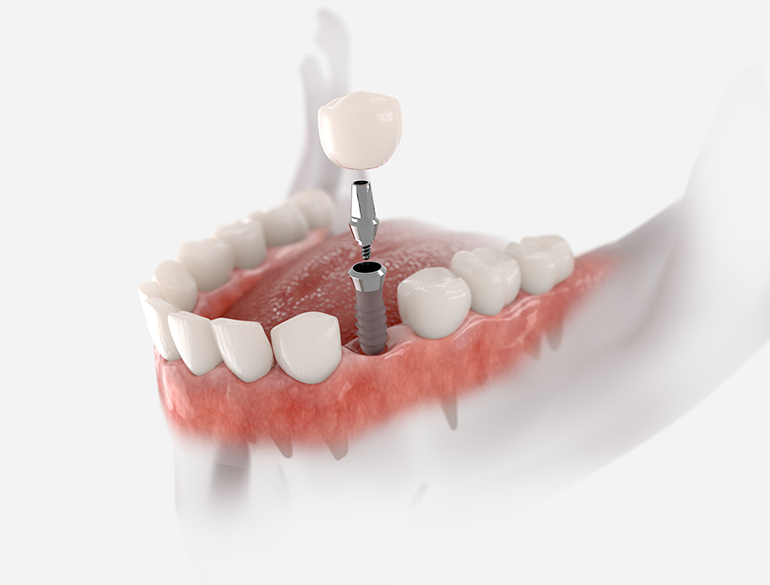Getting My Dental Sense To Work
Our Dental Sense Diaries
Table of ContentsA Biased View of Dental SenseThe 8-Second Trick For Dental SenseThe Ultimate Guide To Dental SenseThe Ultimate Guide To Dental Sense
are clinical devices surgically dental implanted right into the jaw to restore a person's capability to chew or their look. They provide support for artificial (fake) teeth, such as crowns, bridges, or dentures. When a tooth is shed because of injury or condition, a person can experience issues such as quick bone loss, defective speech, or adjustments to chewing patterns that cause pain.Dental dental implant systems contain an oral implant body and dental implant abutment and may also include a joint fixation screw. Root canal procedure. The dental implant body is operatively put in the jawbone in place of the tooth's root. The dental implant abutment is normally connected to the implant body by the joint addiction screw and expands through periodontals into the mouth to support the connected artificial teeth
(https://issuu.com/dentalsense1)Structure of The Oral Implant System choosing dental implants, talk to your dental provider regarding the potential advantages and risks, and whether you are a prospect for the treatment. Things to think about: Your total health is a crucial factor in identifying whether you are a great candidate for oral implants, the length of time it will certainly require to heal, and how long the dental implant may stay in place.
Cigarette smoking might influence the recovery procedure and lower the lasting success of the dental implant. The recovery process for the implant body may take numerous months or longer, during which time you commonly have a short-term joint in area of the tooth. the dental implant procedure: Thoroughly adhere to the oral health instructions given to you by your oral company.
Getting My Dental Sense To Work
Implant failure can result in the demand for another procedure to take care of or change the implant system. Restores the ability to eat Brings back cosmetic appearance Helps keep the jawbone from shrinking because of bone loss Preserves the health of the bordering bone and periodontals Aids keep surrounding (nearby) teeth stable Boosts top quality of life Damages to surrounding all-natural teeth during dental implant positioning Injury to the surrounding tissues during surgical procedure, such as sinus opening Injury throughout surgical treatment (for example, crack of bordering jawbone) Inadequate function, such as seeming like the teeth do not attack together generally An experience that the tooth hangs or turning in position arising from a joint screw loosening Implant body failure (looseness of the dental implant body) as a result of systemic infection, which may be more probable in clients with uncontrolled diabetes due to regional infection in bone and gums supporting the dental implant body because of postponed healing, which may be more probable in patients who smoke Trouble cleaning up the gums around the dental implant, causing poor dental hygiene Without treatment gum condition Post-surgical tingling due to nerve impingement or damages Constantly alert health and wellness care suppliers and imaging service technicians that you have dental implants before any type of magnetic resonance imaging (MRI) or x-ray treatments.
FDA is not aware of any kind of damaging events reported for MRI or x-ray treatments with oral implants. Dental implants systems are commonly made from materials that comply with international consensus criteria of the International Company for Standardization (ISO) or ASTM International. These criteria have information of what makes a secure material.

A dental implant is a structure that replaces a missing out on tooth. With screw-like devices, the specialist inserts a dental implant into the jawbone, and it acts as an anchor for an artificial tooth, called a crown. A tool called a joint links the synthetic tooth to the dental implant. The crown is custom-made to fit the person's mouth and match the color of their teeth.
The Basic Principles Of Dental Sense
Some people are not eligible for dental implant surgical procedure. It is for oral cosmetic surgeons to operate individuals with: acute illnessuncontrollable metabolic diseasebone or soft cells illness or infectionIf these concerns are dealt with, a person can have the surgical treatment. In, dental surgeons avoid operating individuals with: If people with any of the above undertake oral implant surgery, there is a higher risk of the implant falling short.

Dental dental implant surgical procedure is a tailored process. It's not the exact same for everybody. Yet the adhering to provides a general review of what you can anticipate your dental expert, dental cosmetic surgeon, periodontist or prosthodontist to do: Position the dental implant operatively. Offer you time to recover. Attach the message and final crown, bridge or denture.
Next off, your specialist will carefully place the dental implant right into your jaw. Your specialist will certainly rearrange your periodontals and close the cut with stitches. If your dental implant is near the front of your mouth, your dental expert will make a temporary tooth for you to put on up until you heal. In this way, you won't have a void in your smile while you recoup.
The Single Strategy To Use For Dental Sense
Throughout the healing phase, your jawbone must my website fuse to the dental implant. This process can take anywhere from 3 to 9 months.
Once your dental implant heals, your dental professional can attach the abutment (tiny adapter blog post) and your last restoration (crown, bridge or denture). This generally takes regarding one hour to complete and might require a 2nd minor surgery. You should not really feel any type of discomfort throughout your oral implant treatment due to the fact that your supplier will utilize medicine to numb your periodontals.